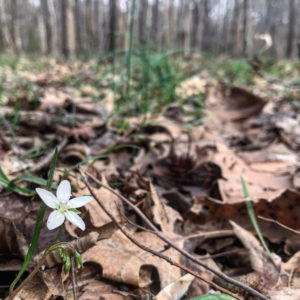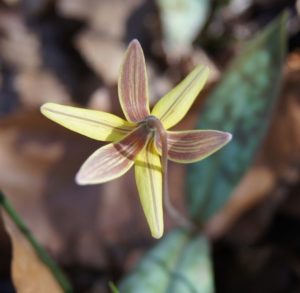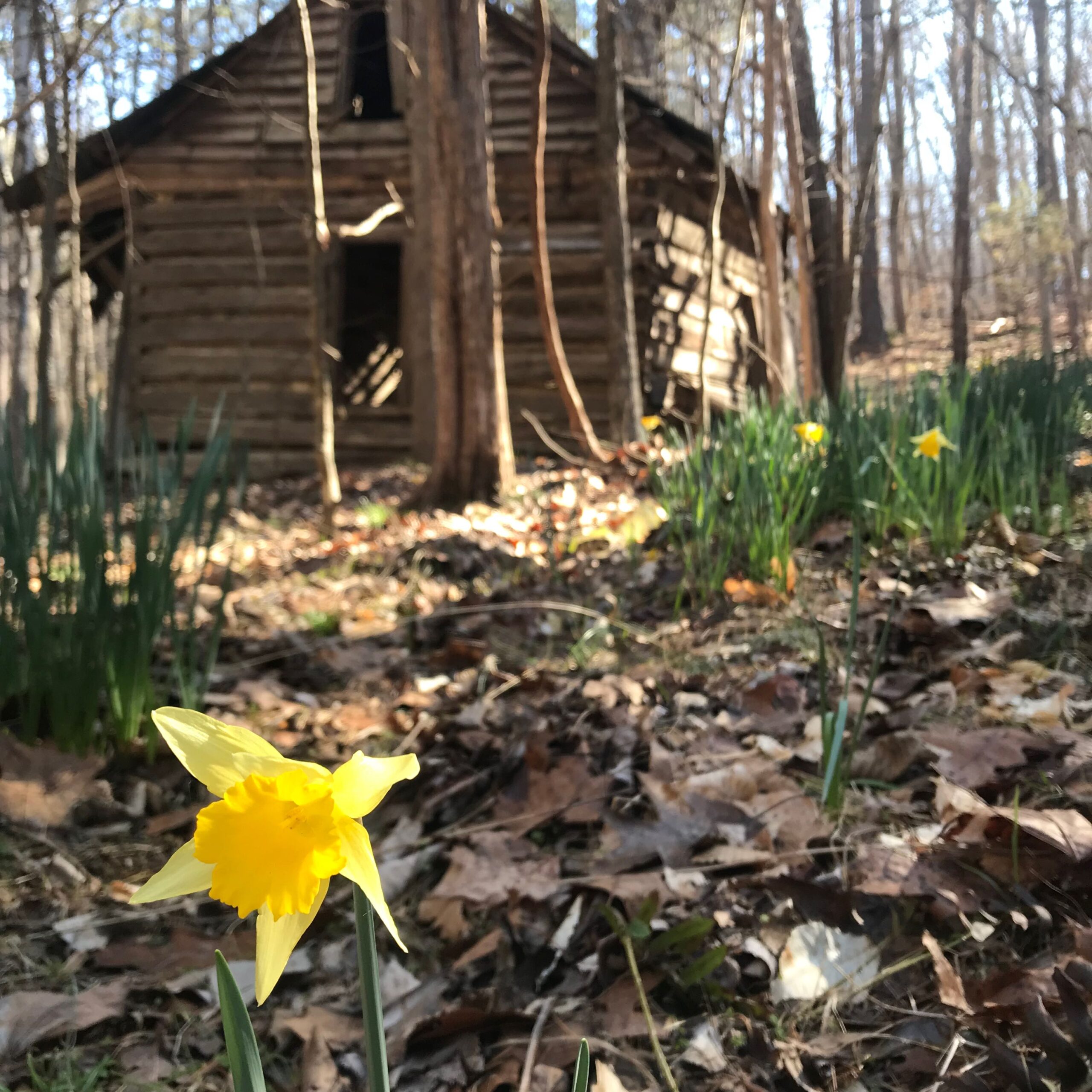On today’s Morning Walk with Joe (Facebook Live, Monday, Wednesday and Friday mornings at 8) I talked about being on the cusp of the spring wildflower season. About how last year at this time we were in the midst of the January thaw, with temperatures in the upper 60s under sunny skies, and how that prompted an early debut of the spring beauty and trout lily, in my mind the true first responders of spring. Others may emerge earlier — certain asters and chickweed — but really, it’s the appearance of the spring beauty and trout lily that let you exhale and realize that spring is just around the bend.

Alas, though I continued to poke and prod the ground on this morning’s walk through bottomland woods along the Eno River, I acknowledged that we likely won’t be seeing those harbingers of spring anytime soon. We’ve been in a remarkably consistent run of cold weather —

temperatures mostly in the upper 40s, occasionally topping 50 — that’s too cool to activate the start of spring. This, I later realized, was akin to driving an ice cream truck through a sweltering summer neighborhood, then telling the kids you only have Neapolitan. At the same time, I realized I also had, deep in the freezer, a pretty dang good ice cream substitute.
The daffodil.
The daffodil is not a plant native to the region and thus, does not qualify as a wildflower. So I could argue that I was being taxonomically correct. The daffodil is a bulb, a perennial as robust as any popular garden flower. A perennial that was one of the few luxuries indulged by early European settlers, planted around their cabins to provide a spark of sunshine right about the time winter was taking its psychological toll. Spring beauties and trout lilies may be the first true wildflowers of spring, but it’s the daffodil that provides the first ray of warming seasonal hope.
And the hearty daffodil is actually starting to come out right about now. If you’re out hiking this weekend and notice a foot-high shoot of green topped by a starburst of six yellow (sometimes white) petals bursting from the leaf litter, you’ve likely stumbled onto an old homestead. Look around. Do you see giant white oaks? Low walls of stone aligned at right angles (a foundation)? A pit maybe four feet deep and six feet around (a root cellar, the refrigerator of yore)? If you do, you’ve stumbled onto an old homestead.
And that — the promise of discovering happy daffodils — coupled with another great weekend forecast — highs mostly in the upper 40s under sunny skies — provides ample reason to get out and explore this weekend.
To increase your chances of catching some early daffodil action this weekend, focus on trails that follow old roadbeds, which likely served homesteads years ago. Not sure how to spot a trail on an old roadbed? Look for trails that are:
- A little wider than your typical single-track trail
- Have fewer twists and turns
- Avoid steep climbs and descents
- Appear to have a berm on either side
Three appropriate trails that immediately come to mind:
Brumley Forest North, Chapel Hill. This property once housed a dairy farm and appears to have supported several homesteads. Be especially vigilant around the three farm ponds.
Mountains-to-Sea Trail at Penny’s Bend Nature Preserve, Durham. Much of the trail follows the Eno River upstream, but two upland stretches visit old farmland. Look especially close near an old stable 2.3 miles in.
Eno River | Fews Ford Access, Durham. There are several opportunities in this area, your best shot: take the Buckquarter Creek Trail, opting for the upland option just past Fews Ford. Two-thirds of a mile in, take the Ridge Trail on your right; in less than 0.2 miles check out the cabin about 30 yards into the woods, on your right.
Hiking is more fun when you’re on a mission. Your mission this weekend: find a daffodil, take it’s picture and post it with its location on our Facebook page.
Let the spring flower season — wild and otherwise — begin!
Three daffodil hikes
You can either click on the links above for information on how to explore the trails mentioned, or you can download our three guides for those hikes in our GetHiking! Guide to 3 Early Wildflower Hikes. Each guide includes key details for each hike (such as how to find the trailhead), detailed route description, map, short video and an overview of the hike. Check it out here.
